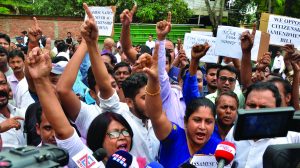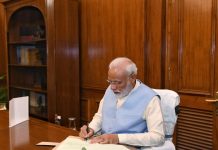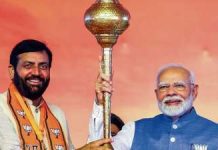 Reporting turmoil and conflicts was order of the day for most of Assam (also northeast India) based scribes as the region was overshadowed by separatist militants with their disruptive activities till few years back. Media persons then faced two edged swords where reporting would bring brickbats from the government agencies and aloofness could invite wraths from the armed rebels.
Reporting turmoil and conflicts was order of the day for most of Assam (also northeast India) based scribes as the region was overshadowed by separatist militants with their disruptive activities till few years back. Media persons then faced two edged swords where reporting would bring brickbats from the government agencies and aloofness could invite wraths from the armed rebels.
Time changes and so thus militants’ influence (read power) over the common people! Slowly those militant outfits, who had dreamt of independence out of New Delhi’s colonial rule over the alienated region, came to realise that materialisation of their golden vision would not be possible in near future. Many turned to peace talks with the government and very few continue struggling for the mirage.
But even if most of the militant leaders could realise their limitations, some elements in the society were not ready to depart from the notion of armed revolution with the fantasy of a homeland with self-rule. Though never engaged with the revolution personally, those emotionally charged entities continued their flowery words in favour of the militant leaders as and when necessary in public domains.
Shockingly a section of media persons also enriched those entities and they left no stone unturned to exploit the volatile situation in favour militants, who used to kill hundreds of common people including women and children during the turbulent days. For them whenever an insurgent was killed in any encounter it was assumed as an attack by the Centre (popularly termed as Rashtra-Jantra) on indigenous population.
But if a member of armed forces, engaged in counter-insurgency operations in the troubled region, got neutralised, it was projected as a sign of victory to the revolution. In numerous occasions, both newspapers and news channels of the region had reported with the spirit of locals that slowly turned sympathetic to the separatists. Even regional newspaper editorials and television talk shows were augmented with the same temperament.
Situation reappeared when most of northeastern localities witnessed an uproarious ambiance few weeks back with the emergence of Citizenship Amendment Bill (CAB) that offers Indian citizenship to all religious asylum seekers from Bangladesh, Pakistan and Afghanistan. The ruling Bhartiya Janata Party brought the bill and even got it passed in Lok Sabha, the lower house of Indian Parliament. However the CAB was lapsed in the upper house (Rajya Sabha) as the saffron party had no majority there.
As the Brahmaputra valley of Assam was rocked by numerous anti-CAB protest demonstrations, a section of media personalities along with intellectuals in Guwahati started capitalising the atmosphere in favour of banned separatist militants (read United Liberation Front of Assam-Independent). Joining of few Assamese youths in Paresh Barua led Ulfa(I) at that time was reported as an instant implication of anti-CAB sentiments.
For records, over 25 Guwahati-based editors signed a memorandum opposing the CAB and submitted to Assam chief minister Sarbananda Sonowal to pursue with the BJP leadership to withdraw the bill, which was criticized as anti-Assamese (Jaati-Dhangshi) in nature. BJP’s moderate face Sonowal only commented that he would not do anything wrong to the people of Assam and finally urged everyone to repose faith on his authority.
The issue of CAB remained visible on poll-campaigns for general elections as the opposition Congress party tried its best to take advantage of the situation. It would be visible only on 23 May poll-outcome day if the voters of Northeast considered the CAB as an important factor while electing 25 representatives to 17th Lok Sabha from the far-eastern region.
However the CAB issue reached to the media fraternity of Assam in a different incarnation as a Maharashtra based voluntary organization lodged an official complaint against five media outlets alleging that those exploited the turmoil over CAB and helped banned militant outfits in their fresh recruitment drives. Following the accusation of Legal Rights Observatory (LRO), the Union Home Ministry had asked the State government in Dispur to take necessary actions.
Vinay Joshi, convener of LRO in his public grievance petition sent on 14 February 2019 accused four editors namely Ajit Kumar Bhuyan (chief editor of Prag News channel), Nitumoni Saikia (editor of Pratidin Time news channel), Manjit Mahanta (former executive editor of Asomiya Pratidin newspaper) and Afrida Hussain (editor of InsideNE news portal) of propagating militant’s ideology to give them a fresh boost in the sideline of anti-CAB rows.
The LRO letter also urged the ministry to ‘investigate role of suspicious Assam media outlets and their owners, their financial transactions, source of income, possible flow of funds from foreign intelligence agencies and banned terrorist groups to media owners and all other possible aspects related to it’. The letter also added that on various occasions, these media outlets had openly professed the need to take up arms against New Delhi and broadcast propaganda videos of militant cadres.
Responding to the LRO letter, Union home ministry official Sanjeev Kumar sent an official communiqué to Assam police chief Kuladhar Saikia and State home secretary Ashutosh Agnihotri on 16 April directing to take necessary actions in the matter. However the communiqué had neither mentioned of any enquiry against the concerned editors nor asked for any follow-up report from the State government.
But twisted with facts, few media outlets reported that the Centre was going for investigations against the editors who opposed the CAB and actions against them. They simply projected the issue as an anti-media conspiracy of the Union government led by Prime Minister Narendra Modi and tried to gather moral supports from the media fraternity across the country.
However, the LRO convener lately made it clear that they opposed the editors for spreading anti-national propagandas during the turmoil and certainly not for their stand in favour or against of the CAB. Asserting that they respect anyone’s stand on political issues, the convener reiterated that they would continue pursuing with the responsible authorities against the violent propaganda so that Assam can be saved from burning again.
Earlier a Guwahati based concerned citizen (Biswajit Nath) sent a memorandum to PMO describing suspicious behaviour of some print and electronic media outlets of the State. His letter on 26 November 2018 asserted that a section of scribes always glorified the insurgents and often highlighted Ulfa(I) leader Barua with live interviews. As usual, the Centre on 22 February asked the State government to take appropriate actions in the matter.
The author is a Northeast India-based media activist
letters@tehelka.com












